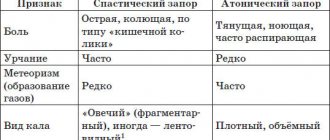Sometimes a foreign body appears in the gastrointestinal tract - a gastric bezoar. This is a solid structure of organic origin, formed due to the ingress of poorly digestible substances into it. These neoplasms are also called calculi or stones. The causes of such pathology in the digestive organ can be physiological and psychogenic.
People who consume large quantities of vegetables and fruits containing coarse fibers are just as susceptible to this pathology as mentally ill patients who swallow their own hair.
Causes of bezoar
If such a stone has formed in the gastrointestinal system, this indicates a violation of the diet or severe gastrointestinal pathologies. A bezoar appears in humans as a result of the influence of such factors:
Some people use hair eating to compensate for their stress.
- Bad habits. Stomach stone, consisting of hair, is formed in people who are prone to eating hair in order to calm themselves in stressful situations.
- Wrong diet. An uneven amount of coarse fiber in food can provoke this disease. When children eat persimmons, plums, and dates, lumps of undigested fruit fibers form in the stomach and intestines. This is especially pronounced if you drink fruit with milk.
- Candidiasis of the gastrointestinal tract.
- Prematurity. Children born prematurely are more likely to develop bezoars.
No magic
The word "bezoar" means "stone" in Arabic. In literary sources, bezoars were often called stones with magical properties. Thus, in the epic Harry Potter, bezoars - stones located in the stomach of a goat - had the properties of a powerful antidote.
The fairy tale plot is somewhat not far from the truth. Indeed, phytobezoars, formed by the ingestion of huge amounts of grass, often form in the stomach of ruminants. And trichobezoars - lumps of hair and fur - are often found in the digestive tract of cats and other animals that have the habit of licking themselves. But, alas, these conglomerates do not have medicinal properties.
The power of marketing. Six products whose benefits are greatly overrated Read more
Types of bezoar
Stone formations detected in the stomach cavity are divided according to their composition:
- Trichobezoars. They were the first to be described. Trichobezoars are hairs in the stomach. The phenomenon is often noticed in schizophrenics and mentally ill people who are prone to hair pulling.
- Phytobezoar. In quantitative terms, this type of stone predominates over others. Phytobezoar is represented by compressed fiber. Most often, the basis for it is persimmon, figs, plums, grapes, bird cherry and other tart fruits and berries.
- Hematobezoar. Presented with blood clots.
- Lactobezoar. More common in bottle-fed infants. Represented by residues of milk sugar and casein protein.
- Shellacobesoar. It is called bitumen or tar concretion. It occurs among representatives of wild tribes who prefer to chew tree resin.
- Pixobesoar. Such a stone appears in people who consume surrogate alcohol and glue.
- Sebobezoar. It is a fatty conglomerate and appears in the gastrointestinal tract due to the accumulation of animal fat ingested with food.
- Anthracobezoar. The stones are represented by casts of coal.
Trichobezoar
Children often suffer from hair eating.
This stone in the gastrointestinal system is a hair cast. It includes not only hair, but also eyelashes, eyebrows, and other outgrowths of the human body. Such a calculus occurs as a result of obsessive eating of fleecy structures. This habit is common in mentally ill people and children. In women, trichobezoars are more common in almost 90% of cases.
Phytobezoar
This new formation is represented by an accumulation of plant fibers. It occurs in 70% of cases of detection of stony formations in the cavities of the gastrointestinal system. Phytobezoar most often has a round or cylindrical shape. It is formed from the pulp of persimmons, figs, plums, grapes, and bird cherry. Such a stone occurs even after excessive consumption of sunflower seeds. It occurs more often in men, in 80% of cases.
Pharmacobezoar
This calculus is represented by an accumulation of chemical and medicinal substances in the cavity of the stomach or other part of the gastrointestinal tract. Most often this is an anthracobezoar, which is an accumulation of activated carbon. It is formed in people with reduced peristalsis, who lack the pushing movements of the muscles of the gastrointestinal system.
Other bezoars
Formations can be formed from glue.
Stones are formed from any substances that cannot be digested by gastric enzymes and hydrochloric acid. Bezoars arise from resin, glue, and fat. They are also of organic origin. An example is blood clots that form in the stomach from a bleeding ulcer, or that get there after swallowing blood.
Discussion
Bezoars should be considered foreign bodies formed when indigestible food components enter the stomach, foreign (organic) bodies accumulating in the lumen of the organ with the formation of a conglomerate of various sizes [1, 8]. There is more than one version of the origin of the term “bezoar”. According to the first, this is the name of the breed of bezoar mountain goats, in whose stomach food (bezoar) stones are often found [8]. Another version is related to the Arabic word badzher or Persian panzehr, meaning antidote [4]. This was the name given to dense, round-shaped deposits, usually varying in chemical composition, formed in the intestines of ruminants, especially in some breeds of wild goats and gazelles. In ancient times, such conglomerates of organic nature were assigned a significant role in the prevention of poisoning, including the ability to actively absorb arsenic compounds, as well as a number of healing properties in the treatment of various diseases of the bladder, epilepsy, in the prevention of difficult childbirth, etc. [1, 4 , 9].
According to the classification of Sh.A. Gulordava and A.S. Kofkin [10] in humans, bezoars of the stomach and intestines are divided into subgroups.
1. Phytobezoars - are of plant origin, arise as a result of eating large quantities of persimmons, wild pears, pine nuts and a number of other plant products (the basis of which is plant fiber), which are slightly susceptible to chemical treatment by gastric juice.
2. Trichobezoars - formed as a result of ingestion of hair, recorded mainly in women and girls who have the habit of chewing hair.
3. Stibo (sebo)bezoars are of animal origin, formed in the stomach under the influence of cold water after ingesting a large amount of animal fat.
4. Bezoars of organic origin - are formed when ingesting resinous substances: varnishes, resins, tar, as well as during the mineralization of a blood clot in the lumen of the stomach (hematobezoars).
5. Bezoars of embryonic origin are derivatives of a dermoid cyst of the stomach. Meconium stones also belong to this group.
6. Polybezoars - of mixed origin, occur after traumatic entry of foreign objects into the gastrointestinal tract, including shrapnel wounds of the abdominal cavity.
The first case of a description of a trichobezoar in the medical literature belongs to Baudamant (1779), who discovered gastric perforation and peritonitis at autopsy in a patient with a foreign body containing hair, and the asymptomatic “carriage” of a trichobezoar in humans was first described in the sectional finding of Swain in 1854 [6, 11, 12]. The reason for the retraction of a food bolus mixed with hair in the stomach is the inability of hydrochloric acid to digest this substance, and the smooth surface of swallowed hair does not allow active, propulsive movement of this conglomerate in the distal direction, which leads to its “settling” in the lumen of the organ with a gradual increase in size and growth for a long time the patient is practically asymptomatic. Successful removal of a trichobezoar by surgical intervention was first reported by Schonbern in 1883, and in our country, documented removal of a trichobezoar was performed by Professor V.M. Mouse in 1912 [8, 13]. The author removed a “hair tumor” weighing 2800 g from a young woman with subsequent recovery of the patient [13, 14].
Separately, it is worth paying attention to the size of the foreign bodies being removed, since the latter can reach gigantic sizes (up to 37.5 cm), and also extend in the intestinal lumen for one and a half meters or more, weighing up to 3.2-4.5 kg (in some cases more than 6 kg), which certainly complicates the stages of intraluminal extraction, and also requires a combination of various technologies (laparoscopic-assisted, hand-port, mini-access or traditional laparotomic surgery) in the treatment of this form of trichophagia [2, 4 , 8, 15, 16].
According to a summary review by M. DeBakey and A. Ochsner [5], up to 80% of all patients with trichobezoars are under 30 years of age, with about 90% being young women. Most often, trichobezoars are associated with trichophagia, accounting for about 18% of patients with trichotillomania, which currently represents a serious psychiatric problem [17]. Only a third of patients with trichophagia have gastrointestinal bezoars [18] and only 1% are subject to surgical treatment [19]. For greater objectification, the criteria of the Diagnostic and Statistical Manual of Mental Disorders (DSM) IV revision (1992) are applicable to this group of patients, according to which the incidence of trichotillomania is 0.6-1.6% among all respondents who meet the above DSM criteria -IV [19]. Among all the variants of the clinical course, the most advanced and dangerous is the so-called Rapunzel syndrome: an extreme form of hair accumulation in which the “tail” of this conglomerate descends distally into the duodenum and small intestine, leading to mechanical obstruction of the intestinal lumen and the development of ileus or its perforation [ 16, 20]. This term was introduced into the medical (psychiatric) lexicon in 1968 with reference to the fairy-tale character (the long-haired girl Rapunzel) of the Brothers Grimm, but it is more often mentioned in the masculine gender and denotes trichophagia with the development of ileus [21].
In addition to trichotillomania, one of the options for the formation of bezoars is the attempts of patients to independently compensate for iron deficiency in hypochromic anemia [4], which is manifested by taste perversion (up to pica chlorotica).
The clinical picture of trichobezoars at the initial stages has a hidden course, but when the conglomerate reaches a significant size, symptoms of a dyspeptic nature are observed, and with obstruction of the organ lumen or small intestinal localization of the bezoar, gastric outlet stenosis syndrome or ileus is observed [1, 6, 8, 9]. Another option for the manifestation of the disease is the formation of acute erosions and ulcers of the stomach, usually in the area of the pyloric canal or antrum due to compression of the mucous membrane with impaired microcirculation and ulcerogenesis, as well as a casuistic onset in the form of allergic manifestations (allergic dermatitis, Quincke's edema, eosinophilia ) [1, 7, 8].
Today, the diagnostic task is fully implemented by the methods of x-ray imaging and intraluminal endoscopy, which also allows the extraction of a bezoar if it is mobile and sufficiently fragile [12, 22]. In this case, staged treatment with fragmentation of the foreign body and its extraction is acceptable, either simultaneously or over several sessions in a short period of time [22].
Classic X-ray diagnostics, especially multislice computed tomography, are also very effective both in the early stages of identifying small foreign bodies and at the stage of planning surgery for Rapunzel syndrome or small intestinal localization of trichobezoar [11]. In recent years, preference has been given to computed tomography techniques, which make it possible to determine the strategy of the treatment process, as well as diagnose intercurrent pathology that can complicate surgical treatment [23, 24].
Typically, up to 1% of all gastrointestinal bezoars are subject to surgical extraction, with the lion's share of small bezoars removed using endoluminal endoscopy. Surgical treatment involving gastro- or enterotomy (if the trichobezoar is localized in the small intestine) is possible both by traditional laparotomy [8, 25] and using video-laparoscopic technologies, which is especially relevant in the last 15 years [4, 16, 17].
As a rule, after removal of the trichobezoar, clinical recovery is achieved, however, a number of observations describe not only the recurrence of the bezoar formation due to the persistence of trichophagia in the patient, but also a complication in the form of repeated manifestations of Rapunzel syndrome with the development of obstructive obstruction and the need for surgical intervention via laparoscopic or laparotomic access [26].
Otherwise, the prognosis after removal of the foreign body is favorable, although patients, depending on the causes of trichophagia, should be under the supervision of neuropsychiatrists and psychiatrists, as well as undergo endoscopic monitoring to prevent the formation of significant trichobezoars in the proximal gastrointestinal tract [1, 4, 18, 26].
Symptoms of a bezoar
The clinical picture is often blurred due to its diversity. It depends on the composition, dimensions, weight, shape and duration of stay of the stony structure in the cavity of the gastrointestinal tract. Symptoms of the presence of stones in the stomach:
- pain in the epigastric region, accompanied by a feeling of heaviness;
- premature satiety;
- nausea ending in vomiting that does not bring relief;
- belching air with a rotten smell;
- weight loss;
- a feeling of something rolling around inside.
Treatment methods for bezoar in the stomach
Treatment of gastric stones is carried out conservatively or surgically, depending on the indications. Small-sized formations can come out on their own naturally. For bezoars of plant etiology with a soft or medium structure, conservative therapy is effective. It includes the following activities:
- ingestion of alkaline mineral waters;
- taking enzymes ( Trypsin , Pepsin , Pancreatin );
- following a diet with the exception of fatty protein foods, some fruits that have coarse fiber and a pronounced astringent effect;
- abdominal massage.
Stones that cannot be crushed into small pieces with alkaline water are crushed and removed endoscopically. In the absence of effect from conservative treatment and in the presence of dense and large stones, a gastrotomy operation is performed. The foreign body is removed from the dissected stomach. After removal of gastric stones, recovery occurs in full.
How is a bezoar diagnosed?
Diagnosis begins with collecting anamnesis. Find out whether the person has bad habits. It is advisable to interview his relatives. Among the laboratory and instrumental methods used:
Anemia may be a sign of the presence of such a “stone” in the organ.
- A general blood test. If there is a bezoar in the stomach, anemia is often observed.
- Radiography. The photograph shows a stone with a characteristic shape and location.
- Ultrasound diagnostics of the abdominal cavity. With this instrumental method, a hyperechoic formation is noted in the epigastric region.
- Esophagogastroduodenoscopy. This invasive examination method reveals not only the presence of a foreign body, but also its composition, consistency, and the degree of damage to the gastrointestinal mucosa.
From what, from what?
In addition to persimmons, phytobezoars can be formed by excessive consumption of figs, plums, dates, grapes, nuts and sunflower seeds, especially poorly peeled ones and with seeds. The risk increases if you do not drink these foods and chew them poorly. Pathology is also facilitated by various problems with the gastrointestinal tract - increased viscosity of mucus in the stomach, impaired evacuation function, decreased secretion of gastric juice, and others.
Much less common than phytobezoars, but other formations are still found. For example, sebobezoars are formed by consuming goat, lamb and beef fat without sufficient heat treatment; anthracobezoars are an accumulation of undissolved residues of activated carbon and other medications; Pixobesoars appear when drinking low-quality alcohol or swallowing chewing gum.
Trichobezoars, which appear when hair is swallowed, are, oddly enough, a fairly common phenomenon. It turns out that many people under stress not only bite their nails, but also bite the ends of their hair, and this can lead to the formation of giant “hairpieces” in the abdominal cavity, which disrupt the functioning of the entire digestive tract and can lead to the most serious complications.
A spoon of tar. What is the harm from healthy food? More details
Treatment of pathology
Stone formations in people’s stomachs must be treated in a hospital. The patient is hospitalized, examined, and differential diagnostics is carried out with a malignant tumor of the gastrointestinal tract. If the calculus is small in size, limit yourself to using a solution of soda or mineral water. In this case, the abdominal wall is massaged. In this way, the destruction of the bezoar is achieved. If it is large, it is removed surgically. The operation consists of laparoscopy with removal of the stony formation.
Chew and drink!
The only way to get rid of any bezoars is surgery. Therefore, it is important to prevent their formation.
Eating rough, plant-based foods that contain a lot of fiber is healthy, but in moderation. It cannot be abused. It is also important to wash down such food with enough water to help digest the food. The diet should be varied. Eating only meat or only vegetables and fruits is wrong.
In addition, food must be chewed thoroughly. If this is not done, not only does the risk of bezoars increase, but also the risk of simply choking increases. In the warm season, when the barbecue season begins, the number of calls to endoscopists regarding the removal of unchewed pieces of meat from the esophagus sharply increases.
Important
Do not forget to undergo preventive gastroscopy and colonoscopy every two years, especially if you are over 40 years old. Remember: cancer in the initial stages does not manifest itself in any way, it can sometimes be detected only with these examinations, while the successful outcome of treatment depends precisely on early diagnosis.
Why is a bezoar dangerous?
Formation in the organ leads to its obstruction.
This formation is a foreign object that at any time can clog the lumen of the gastrointestinal tract and cause obstruction. Bezoar often causes ulcers of the gastrointestinal system and inflammatory processes in it. Timely prevention and treatment will help avoid a possible death.
Possible complications
If the bezoar is a large stone moving towards the small intestine, it can cause recurrent intestinal obstruction up to its complete blockage. For this complication, surgical treatment is indicated.
Another complication caused by the formed bezoar may be perforation of the stomach, as well as ulceration of its mucous membranes and bleeding. The same thing can happen with the duodenum.
Classification
Bezoars can be of different origins, that is, have different compositions.
So, what could such a stone consist of:
- trichobezoar - a stone made of hair, wool or fiber (thread);
- phytobezoar - a stone made of cellulose (dietary fiber);
- steobezoar – a stone made from crystallized fats (tard);
- organic bezoar - a stone made from blood clots treated with gastric juice;
- embryonic bezoar - a stone in a newborn child (meconium stones and stones from a cyst formed in the prenatal period);
- mixed stones.
Interesting facts about bezoars. Mention in history and literature
In literature, a bezoar often appears as a stone that is endowed with special properties. For example, a bezoar can protect against the toxic effects of arsenic and other poisons. Or, for example, by dissolving a bezoar in wine, you can get a drink that will cure almost any disease. Of course, all this is not true, although if you delve into history, you can find information that there were attempts to treat various diseases with stones (bezoars).
Photo: https://www.flickr.com/photos/jdicert/6238846272/
There is also a mention that special stones were even “grown” in the stomachs of the poor! And that the princes wore fragments of bezoars in their rings as an antidote.
Modern cinema uses this pathology in various TV series (for example, House Doctor) and films about doctors. Since the disease is quite rare, but unusual and interesting!
Diagnostics
Diagnosis is based on medical history, gastric radiography and gastroscopy. For stones of soft consistency, patients are advised to drink warm alkaline drinks and use enzymatic preparations. For medium-density foreign bodies, endoscopic destruction and removal of bezoars are used. If conservative therapy is ineffective, surgical removal of the stone is performed.
Complications
Prolonged stay of a bezoar leads to the formation of bedsores of the stomach wall. Local blood circulation is disrupted, ischemia and necrosis develop with the formation of ulcerations. Erosion and gastric ulcers can lead to perforation of the muscle layer and the occurrence of peritonitis and sepsis. A rare complication is intestinal obstruction. When a bezoar stone enters the small intestine and blocks the intestinal lumen, obstructive intestinal obstruction develops.









